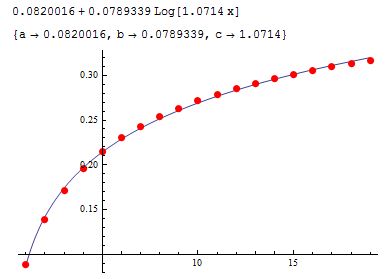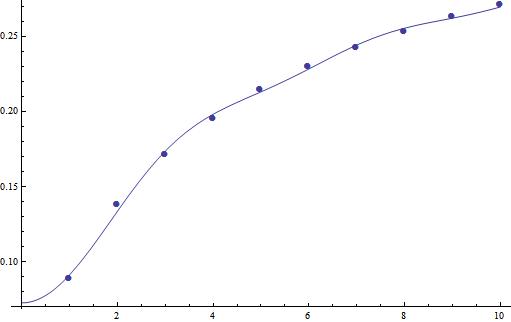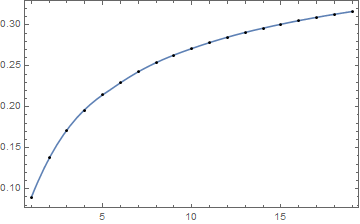Suppose some data with no regular pattern is given, so common patterns of functions all fail to fit it. Then how can one find the best fitting curve? I believe there will be some data for which we can not find any regular pattern. One can try with the following data (luckily, we know that this sequence has a limit):
{{1, 0.08888888888888872},{2, 0.13842641081508972},{3, 0.17153280014540232},
{4, 0.19586894934728782},{5, 0.21482500502852542},{6, 0.23017213935351592},
{7, 0.24294479920054762},{8, 0.25379708095478332},{9, 0.26316771779066082},
{10, 0.27136463872018062},{11, 0.27861184976714762},{12, 0.28507709754351612},
{13, 0.29088903838678592},{14, 0.29614834727916052},{15, 0.30093516063430942},
{16, 0.30531421254734282},{17, 0.30933847047870212},{18, 0.31305176609215322},
{19, 0.3164907360488469}}
Any help or suggestion will be appreciated!









